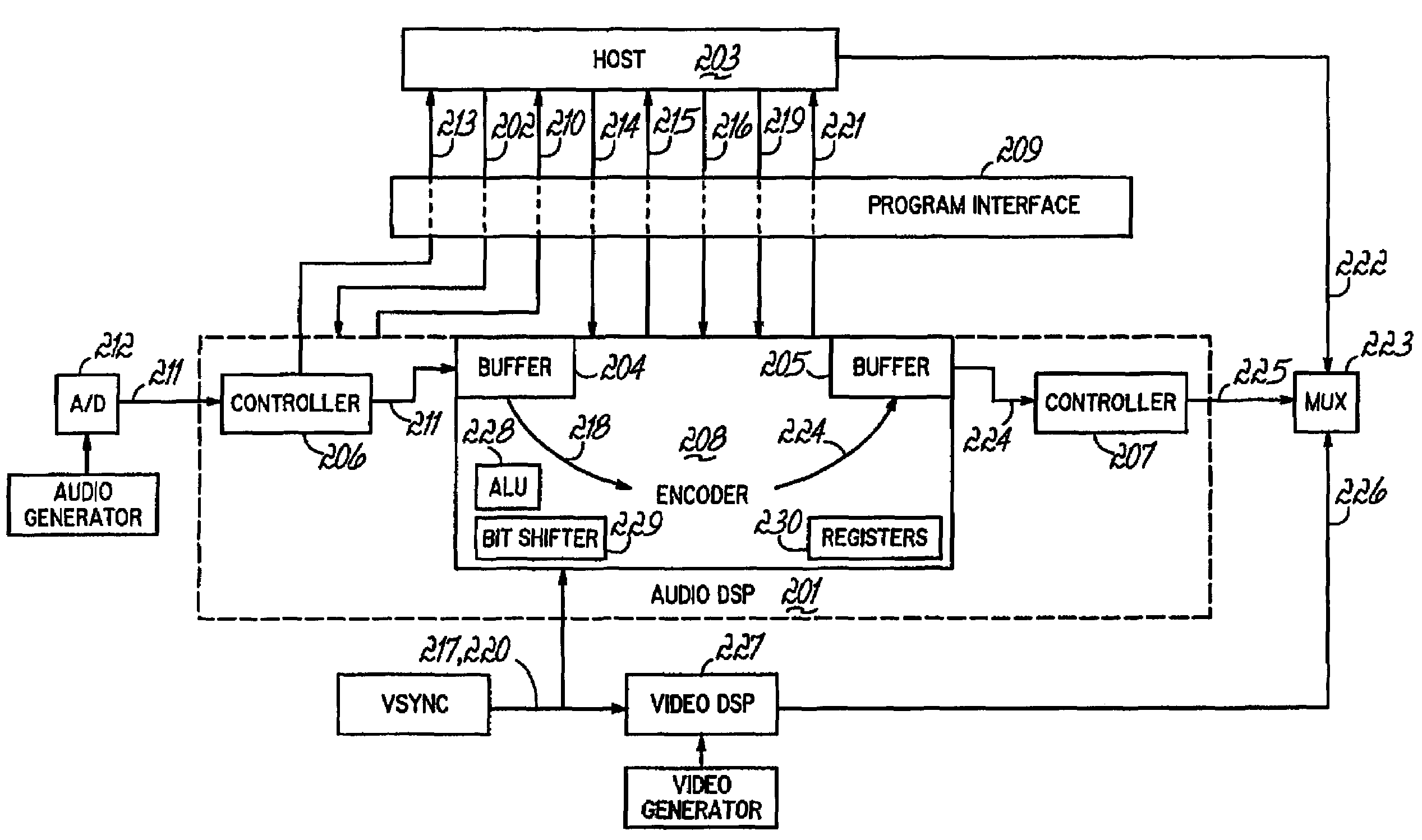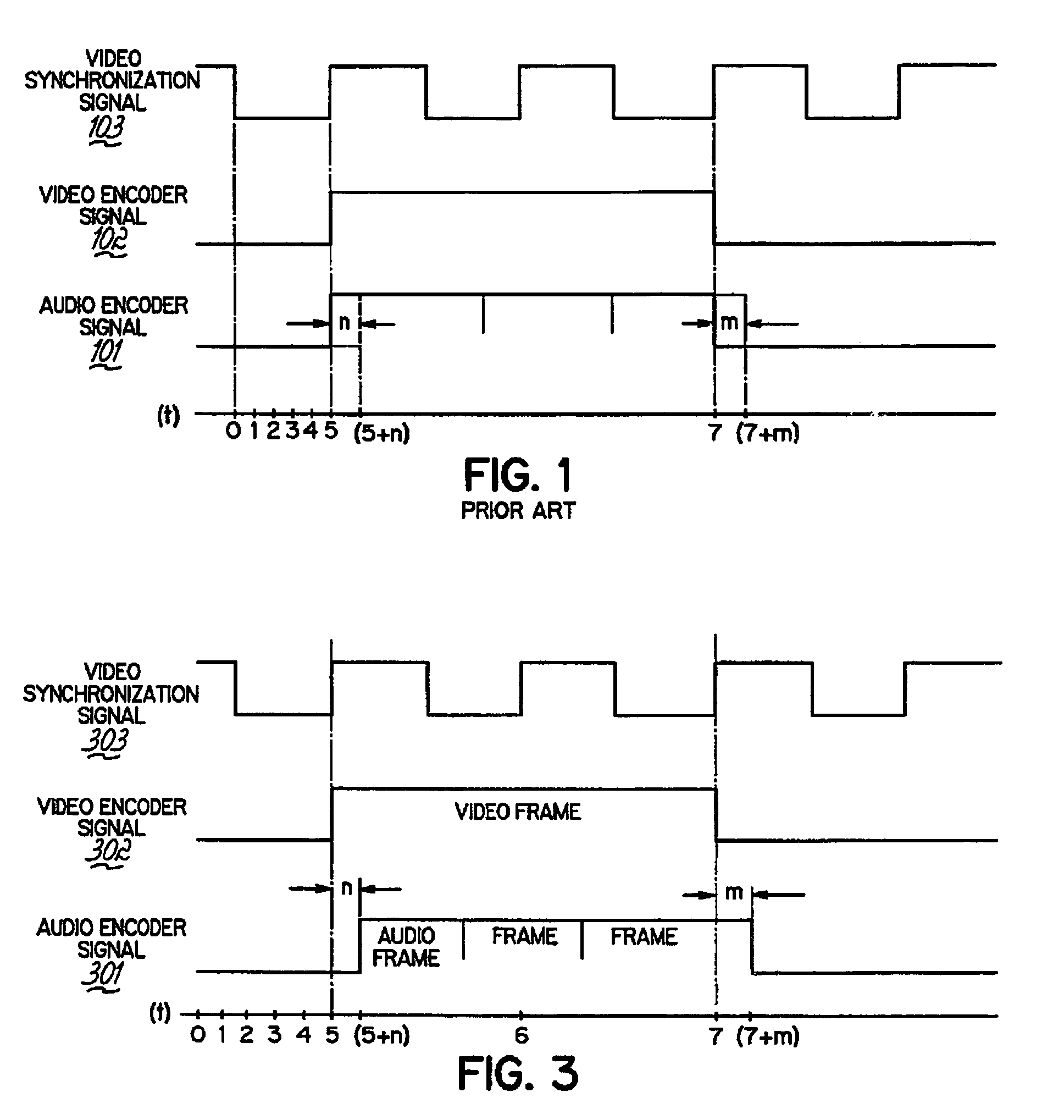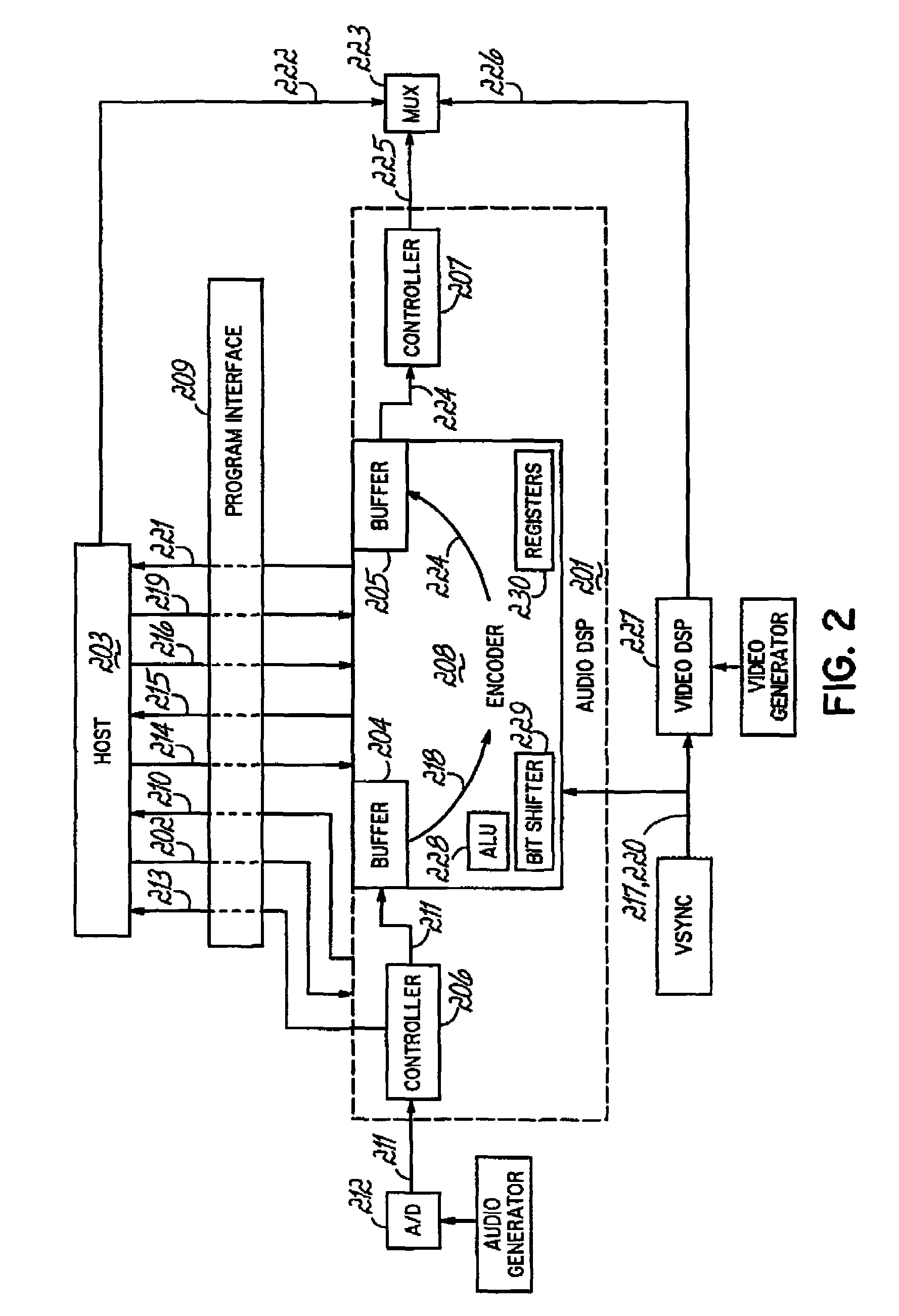Start/stop audio encoder apparatus and method for synchronizing digital audio and video signals
an audio encoder and digital audio technology, applied in the field of digital signal processing, can solve the problems of inability to achieve precise timing control of parallel bit streams, inability to read audio and video out of synchronicity, and inability to achieve parallel bit streams. achieve the effect of improving the synchronization of playback
- Summary
- Abstract
- Description
- Claims
- Application Information
AI Technical Summary
Benefits of technology
Problems solved by technology
Method used
Image
Examples
Embodiment Construction
[0029]The encoding process described below utilizes a host microprocessor and a digital signal processor (DSP) to synchronize the start and end encoding sequences for audio and video signals. Namely, the encoding processes of both signals are made to be in synchronization with a common reference, or video synchronization signal. To achieve this synchronization, the encoding parameters of an audio DSP chip are preset according to characteristics of an audio packet. A buffer temporarily stores the audio data until a video synchronization signal is received. Since the associated video frame is already slaved to the video synchronization clock, the audio data is effectively processed in sequence with the video data. A value representing the difference between the end of the encoded audio frame and a second video synchronization signal is communicated to the host. Those samples are ultimately truncated so that the resultant audio frame does not exceed the length of the encoded video fram...
PUM
 Login to View More
Login to View More Abstract
Description
Claims
Application Information
 Login to View More
Login to View More - R&D
- Intellectual Property
- Life Sciences
- Materials
- Tech Scout
- Unparalleled Data Quality
- Higher Quality Content
- 60% Fewer Hallucinations
Browse by: Latest US Patents, China's latest patents, Technical Efficacy Thesaurus, Application Domain, Technology Topic, Popular Technical Reports.
© 2025 PatSnap. All rights reserved.Legal|Privacy policy|Modern Slavery Act Transparency Statement|Sitemap|About US| Contact US: help@patsnap.com



